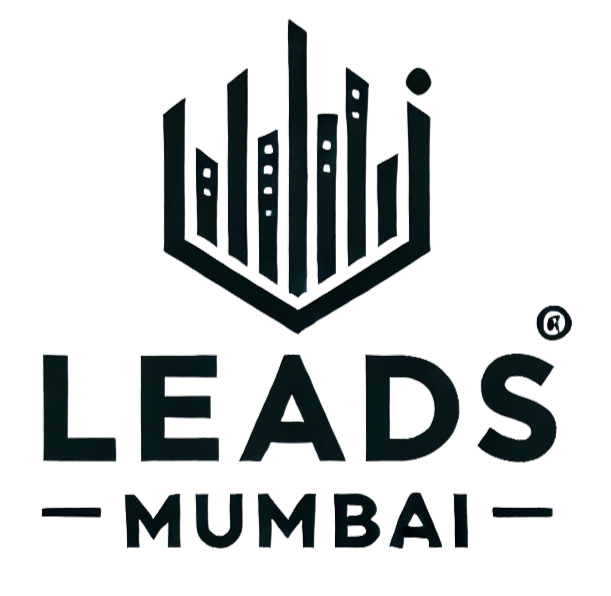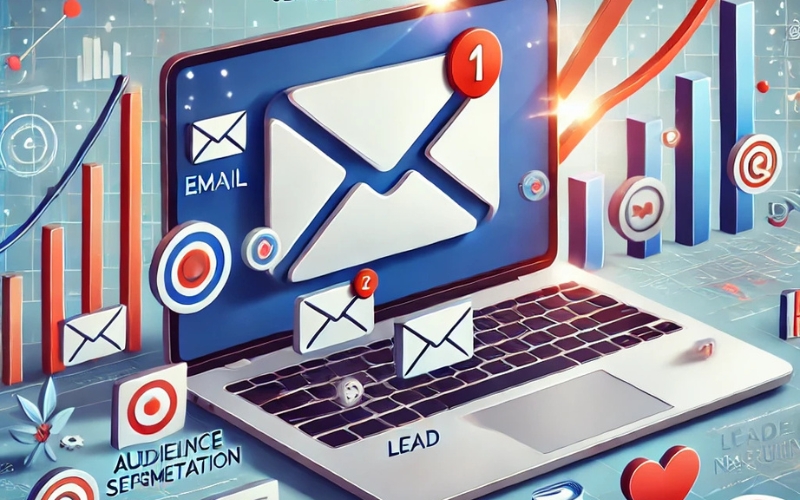Building a targeted email list is the foundation of any successful email marketing strategy. However, simply collecting email addresses is not enough. To truly maximize the potential of your email marketing efforts, it’s essential to focus on gathering high-quality subscribers who are genuinely interested in your offerings. This can be achieved through understanding your audience, offering valuable lead magnets, and nurturing relationships with engaging content. In this article, we’ll explore three key strategies for building a targeted email list: defining your target market, using lead magnets and opt-in incentives, and maintaining strong relationships through personalized email content.
Understanding Your Audience: Defining Your Target Market

Building a successful email list begins with a deep understanding of your target audience. Knowing who you are trying to reach will help ensure that your email marketing efforts are focused and effective. By segmenting your audience based on demographics, interests, and behaviors, you can create a highly targeted email list that resonates with the right people. Let’s explore why audience segmentation is essential, how to identify your ideal customers, and how creating buyer personas can enhance your email marketing strategy.
The Importance of Audience Segmentation
Audience segmentation involves dividing your overall audience into smaller, more specific groups based on shared characteristics. These characteristics could include age, gender, location, buying habits, interests, and more. Segmentation allows you to send highly personalized and relevant content to each group, increasing engagement and conversion rates. For example, a fitness brand may segment its list into groups such as “beginner gym-goers” and “advanced bodybuilders” to send them tailored workout tips, making the emails more valuable to each group.
Without segmentation, your emails may become too generic and fail to address the unique needs of different audience groups. The result is lower open rates, click-through rates, and ultimately, fewer conversions. By segmenting your email list, you ensure that the right message reaches the right people at the right time, improving the effectiveness of your campaigns.
Tools and Techniques for Identifying Your Ideal Customers
Once you understand the importance of segmentation, the next step is identifying who your ideal customers are. Various tools and techniques can help you collect the necessary data:
- Google Analytics: This tool provides insights into your website visitors, including their demographics, location, interests, and behaviors. You can use this data to better understand your audience and identify segments that are most likely to engage with your emails.
- Social Media Insights: Platforms like Facebook, Instagram, and LinkedIn offer valuable analytics on the people who engage with your content. These insights can reveal demographic information such as age, gender, location, and interests, which can be used to refine your email list segmentation.
- Surveys and Polls: Conducting surveys or polls directly on your website or through email allows you to gather firsthand information about your audience’s preferences, challenges, and interests. This can help you fine-tune your segmentation strategy.
Creating Buyer Personas
A buyer persona is a semi-fictional representation of your ideal customer based on data and insights gathered from your audience. Creating detailed buyer personas helps you understand your customers’ motivations, challenges, and behaviors, which is essential when crafting personalized email content.
To create a buyer persona, start by collecting demographic data such as age, gender, income level, and job role. Then, dive deeper into psychographics—what are their pain points, goals, and desires? For example, a persona for a health and wellness brand could include a middle-aged professional who struggles to find time for exercise and is interested in quick, effective home workout routines.
Having clear buyer personas ensures that every email you send speaks directly to the needs and interests of the recipient, improving both engagement and conversion rates.
In conclusion, understanding your target market through audience segmentation, using data-driven tools to gather insights, and creating buyer personas are essential steps in building a targeted email list. These strategies not only help you attract the right subscribers but also ensure that your email campaigns are relevant, personal, and highly effective.
Lead Magnets and Opt-In Incentives to Attract Quality Subscribers

One of the most effective strategies for Building a Targeted Email List is offering valuable lead magnets and opt-in incentives. Lead magnets—such as eBooks, free trials, webinars, or checklists—are designed to provide immediate value to potential subscribers in exchange for their contact information. By focusing on Building a Targeted Email List, you can attract high-quality leads who are genuinely interested in what your business has to offer. Here’s how lead magnets and opt-in incentives can play a vital role in attracting subscribers and how to optimize them for maximum impact.
The Role of Lead Magnets in Enticing Potential Subscribers
Lead magnets serve as a powerful tool for Building a Targeted Email List by offering potential subscribers something of value upfront. The key is to ensure the offer aligns with the needs and interests of your audience. For example, if you run an e-commerce store, offering a discount code in exchange for an email sign-up can help with Building a Targeted Email List. Similarly, businesses in the educational sector might offer free eBooks or guides to attract the right subscribers, contributing directly to Building a Targeted Email List.
Lead magnets not only grow your email list but also establish your business as an authority by providing helpful, relevant content. This creates trust, which is crucial for converting leads while continuing to focus on Building a Targeted Email List effectively.
Best Practices for Creating Compelling Opt-In Incentives
To encourage sign-ups and aid in Building a Targeted Email List, your opt-in incentives need to be compelling and relevant. Here are some best practices for creating lead magnets that drive conversions:
- Be Specific and Actionable: Tailor your lead magnets to solve a specific problem your audience faces. Clear solutions are essential for Building a Targeted Email List that consists of genuinely interested subscribers.
- Offer Immediate Value: Immediate access to resources increases the likelihood of sign-ups, making it a crucial aspect of Building a Targeted Email List effectively.
- Keep It Simple: Avoid overcomplicating offers; simplicity helps maintain focus on Building a Targeted Email List with higher-quality subscribers.
How to Place and Optimize Sign-Up Forms to Increase Conversions
While offering valuable lead magnets is vital, optimizing sign-up forms is equally important for Building a Targeted Email List. Proper placement and optimization can dramatically improve conversions.
- Use Prominent and Visible CTAs: Placing clear, visible CTAs strategically across your website makes Building a Targeted Email List more effective.
- Simplify the Sign-Up Process: Keeping forms minimal encourages sign-ups, which directly aids in Building a Targeted Email List.
- Offer Multiple Opt-In Options: By catering to diverse preferences, you expand opportunities for Building a Targeted Email List across various user groups.
- Optimize for Mobile: With most users accessing websites via mobile, ensuring your forms are mobile-friendly is critical for Building a Targeted Email List effectively.
In conclusion, using lead magnets and opt-in incentives wisely can significantly enhance your efforts in Building a Targeted Email List. By offering valuable, relevant content and simplifying the sign-up process, you create a seamless path for potential subscribers. Focusing on actionable and strategically placed incentives ensures success in Building a Targeted Email List that drives both quality and quantity.
Nurturing Relationships with Engaging Email Content

Building a targeted email list is just the beginning of a successful email marketing campaign. The real challenge lies in maintaining engagement and developing long-term relationships with your subscribers. One of the most effective ways to do this is by delivering valuable, personalized content that resonates with your audience. Here’s how you can nurture your relationships with engaging email content, segment your email list, and create effective welcome email series and follow-up campaigns.
How to Maintain Engagement and Build Trust Through Valuable Content
The foundation of any successful email marketing strategy is delivering valuable content that meets the needs and interests of your audience. When subscribers feel that they are receiving content that is relevant to them, they are more likely to stay engaged and look forward to future emails. To maintain engagement, focus on providing content that solves problems, offers useful tips, or entertains your audience.
For example, if you run a health and wellness brand, send out emails with expert advice, workout tips, or healthy recipes. If you’re in the e-commerce space, share product updates, exclusive discounts, or customer success stories. The more relevant and helpful your content, the more likely subscribers will engage with your emails, and in turn, develop a stronger connection with your brand.
Building trust is also crucial in nurturing your subscribers. Transparency, reliability, and consistency in your email communication can establish your brand as a trusted resource. Regularly providing high-quality, well-crafted content will help position your brand as an expert in your field, which strengthens the relationship with your subscribers over time.
Strategies for Segmenting Your Email List and Sending Personalized Emails
Not all subscribers are the same, and sending generic emails to your entire list is unlikely to yield the best results. By segmenting your email list based on demographics, behaviors, purchase history, or engagement levels, you can send more relevant and personalized emails.
For instance, a retail business could segment their list by customer behavior, such as first-time buyers, frequent shoppers, or customers who have abandoned their carts. Tailor your email content to each group, offering special promotions to frequent buyers, personalized product recommendations to new subscribers, or a reminder to complete an abandoned purchase.
Personalized emails can significantly improve engagement. Simple tactics like addressing recipients by their first name, sending them content based on their previous interactions, or offering personalized discounts can make subscribers feel valued and more likely to interact with your emails.
The Importance of a Welcome Email Series and Follow-Up Campaigns
When a new subscriber joins your email list, it’s essential to make a strong first impression. A welcome email series is a great way to introduce them to your brand, set expectations for future communication, and start building a relationship. This series can include a thank-you message, an introduction to your products or services, and a special offer to encourage immediate engagement. A well-designed welcome series can increase engagement by 33%, according to studies.
In addition to a welcome series, follow-up campaigns are essential for keeping the relationship going. Follow-up emails can remind subscribers of the benefits your brand offers, provide additional value through helpful content or offers, and even ask for feedback on their experience. Follow-ups not only maintain interest but also help guide subscribers down the conversion funnel, whether that means making a purchase or taking another valuable action.
In conclusion, nurturing relationships with your email subscribers is vital for long-term engagement and business success. By delivering valuable content, personalizing your emails through segmentation, and creating a strong welcome email series and follow-up campaigns, you can foster trust, maintain engagement, and ultimately drive conversions. A thoughtful, consistent approach to email marketing ensures that your subscribers stay connected and loyal to your brand.
Conclusion
In conclusion, building a targeted email list is not just about quantity—it’s about quality and engagement. By understanding your audience, offering compelling incentives, and nurturing relationships through personalized content, you can create an email list that drives meaningful interactions and long-term business success. Implementing these strategies will help you attract the right subscribers, keep them engaged, and ultimately convert them into loyal customers. Through consistent, relevant communication, your email marketing efforts will become a powerful tool for building stronger connections with your audience and growing your business.

